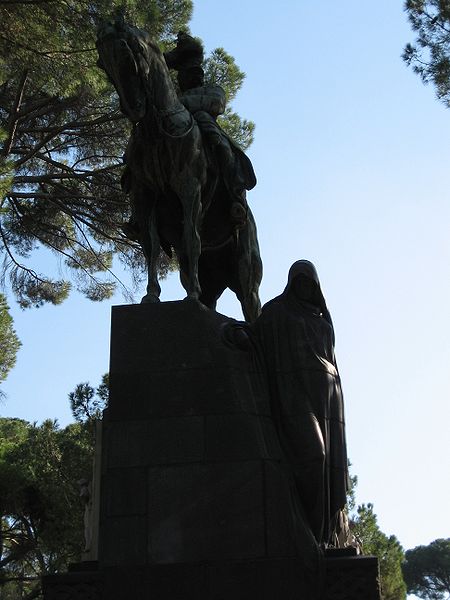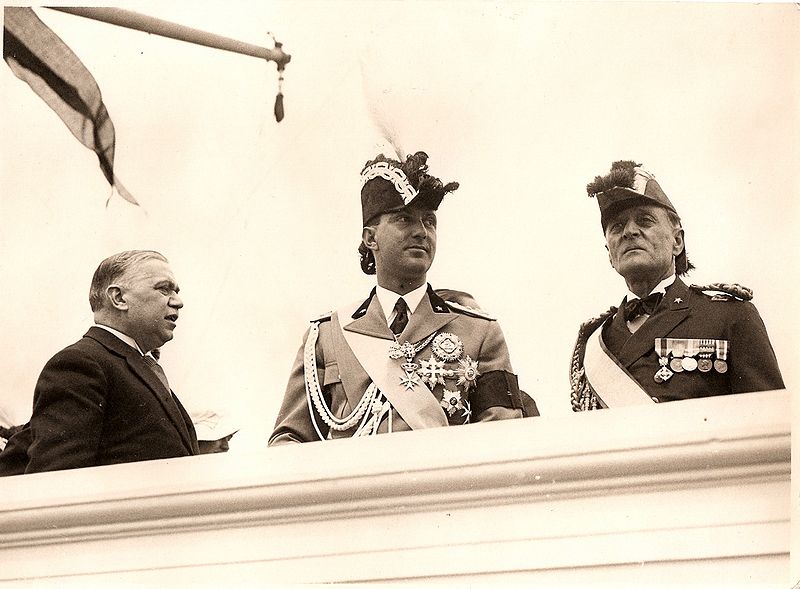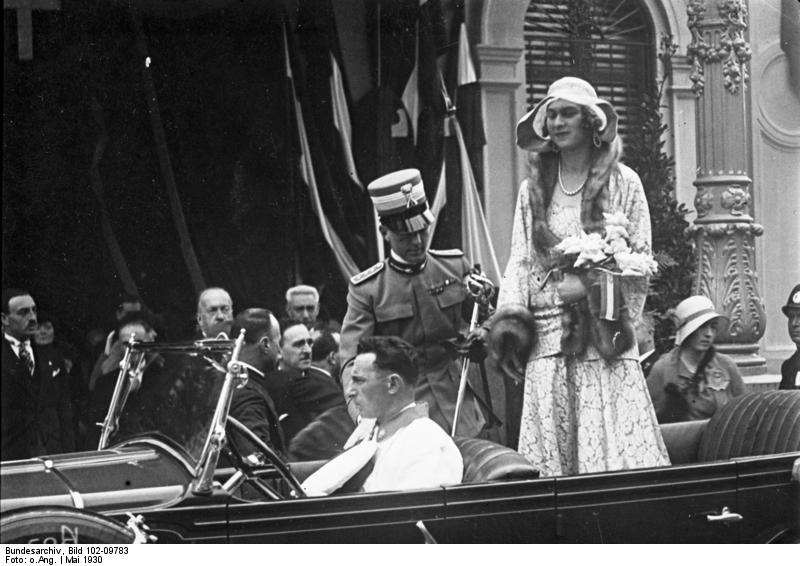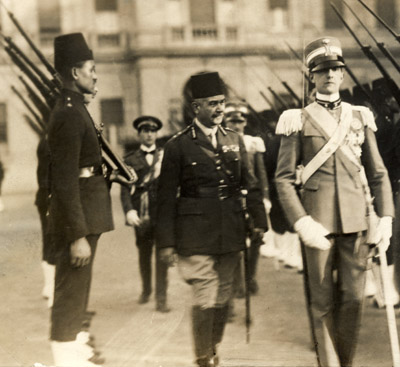<Back to Index>
- King of Italy Umberto II, 1904
PAGE SPONSOR
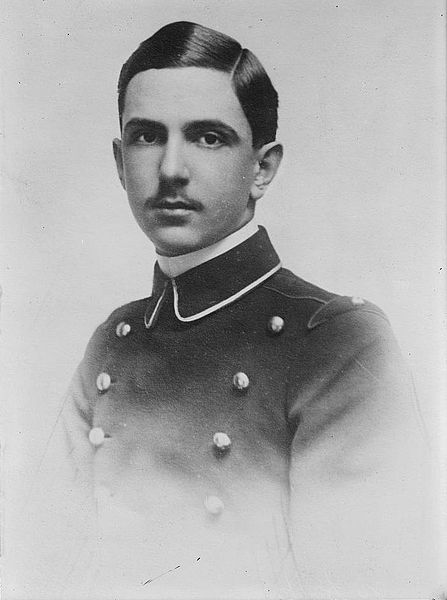
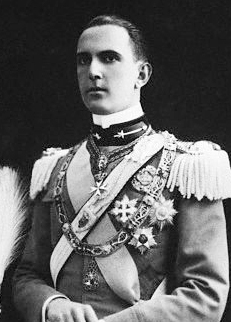
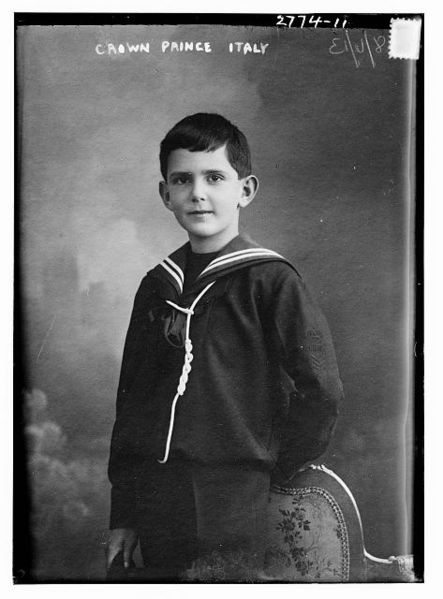
Umberto II, occasionally anglicized as Humbert II (15 September 1904 – 18 March 1983) was the last King of Italy for slightly over a month, from 9 May 1946 to 12 June 1946. He was nicknamed the King of May (Italian: Re di Maggio)
Umberto was born at the Castle of Racconigi in Piedmont. He was the third child, and the only son, of King Victor Emmanuel III of Italy and Princess Elena of Montenegro.
Umberto was married in Rome on 8 January 1930 to Marie José of Belgium (1906 – 2001). His children included: Maria Pia (born 1934), Vittorio Emanuele (born 1937), Maria Gabriella (born 1940), Maria Beatrice (born 1943).
The
Prince of Piedmont was educated to a military career and in time became
the commander in chief of the Northern Armies, and then of the Southern ones. However, his role was merely formal, the de facto command belonging to Benito Mussolini. By mutual agreement, Umberto and Mussolini always kept a distance. An attempted assassination of the Prince took place in Brussels on
24 October 1929, the day of the announcement of his betrothal to
Princess Marie José. The Prince was about to lay a wreath on the
Tomb of the Belgian Unknown Soldier at the foot of the Congreskolom. With a cry of 'Down with Mussolini!' the culprit, Fernando de Rosa, fired a single shot that missed the Prince of Piedmont. De Rosa was arrested and under interrogation claimed to be a member of the Second International.
It has been conjectured that Mussolini had collected a secret dossier on Umberto, but this folder (which is said to have been found after the dictator was shot), was never seen publicly.
Following the Savoyards' tradition ("Only one Savoy reigns at a time"), he kept apart from active politics until he was finally named Lieutenant General of the Realm. Only in one case, while he was in Germany for a royal wedding, did he make an exception — Adolf Hitler asked for a meeting. This action was not considered proper, given the international situation, and afterwards Umberto was even more rigorously excluded from political events.
On 29 October 1942, Umberto was awarded the rank of Marshal of Italy (Maresciallo d'Italia).
In 1943, the Crown Princess Maria José, the daughter of King Albert I of Belgium, involved herself in vain attempts to arrange a separate peace treaty between Italy and the United States, and her interlocutor from the Vatican was Monsignor Giovanni Battista Montini,
a senior diplomat who later became Pope Paul VI. Her attempts were not
sponsored by the king and Umberto was not (directly, at least) involved
in them. After her failure (she never met the American agents), she was
sent with her children to Sarre, in Aosta Valley, and isolated from the political life of the Royal House.
As the Allies freed more and more of Italy from the puppet Salo regime,
it became apparent that Victor Emmanuel was too tainted by his previous
support of Fascism to have any further role. Accordingly, in April
1944, he transferred most of his powers to Umberto. This status was
formalized after Rome was liberated in June, when Victor Emmanuel
transferred his remaining constitutional powers to Umberto, naming his
son Lieutenant General of the Realm. However, Victor Emmanuel retained the title of king.
Umberto earned widespread praise for his role in the following three years. Some believe that had his father handed over the throne in 1943, the monarchy would have won the 1946 referendum on its survival. As it was, Victor Emmanuel did not formally abdicate in favor of his son until 9 May 1946.
Many Italian monarchists expressed doubts about the correctness of the referendum, claiming that millions of voters, many of them pro-monarchist, were unable to vote because they had not yet been able to return to their own local areas to register. Nor had the issue of Italy's borders been settled definitively, so the voting rights of those in disputed areas had not been satisfactorily clarified. Other allegations were made about voter manipulation, and even the issue of how to interpret the votes became controversial, as it appeared that not just a majority of those validly voting but of those votes cast (including spoiled votes), was needed to reach an outcome in the event the monarchy lost by a tight margin.
Umberto served as king for 33 days. He and his wife were both young and cultivated, and thus presented a stark contrast to Victor Emmanuel. It was to no avail, however -- a decisive majority voted to make Italy a republic. Having promised to accept the election results, Umberto accepted the defeat, urging his now former subjects to serve the new republic. The monarchy formally ended on 12 June 1946, and Umberto left the country. Prime Minister Alcide de Gasperi assumed office as Italy's interim Head of State.
Umberto and Maria José separated in exile; it was an arranged marriage, following a long tradition of royal families.
Some academics have
explored Umberto's possible homosexuality. As early as the 1920s,
Mussolini had collected a dossier on his private life for purposes of
blackmail. Certainly during the war, newspapers asserted that Umberto
was homosexual,
and information continued to be spread in the lead up to the post war
referendum on the monarchy in the hope of influencing the outcome. It
is, however, unclear to what extent such rumors could be substantiated.
Umberto's custom of giving a fleur - de - lis made of precious stones to favored young officials in his entourage was well known, and Umberto's lovers may have included Luchino Visconti and Jean Marais; as a former army lieutenant who published details of Umberto's advances to him. Except for public appearances, Umberto and Maria Jose generally lived apart.
King Umberto lived for 37 years in exile, in Cascais in Portugal. He was a popular old gentleman, nicknamed "Europe's grandfather", seen at many of Europe's royal weddings. He never set foot in his native land again; the 1947 constitution of the Italian Republic barred all male heirs to the defunct Italian throne from ever returning to Italian soil. Female members of the Savoy family were not barred except consort queens.
Umberto traveled extensively during exile, and was often to be seen in Mexico visiting his daughter, and in the company of friends like Commendatore Flavio Mansi Tazzer.
President Sandro Pertini wanted
Umberto to be allowed to return to his native country by the Italian
parliament when he was dying in 1983. Ultimately, however, he died in Geneva and was interred in Hautecombe Abbey. No representative of the Italian government attended his funeral.
Ancestry and even the very filiation of Humbert I of Savoy is not clear, as
there are four possibilities, one of them giving him a Teutonic ancestry including as his ancestor Widukind. Christian Settipani proved through contemporary documents that Arnulf of Metz and his ancestors were Frankish in the male line, since they were ruled by the Frankish Law.
